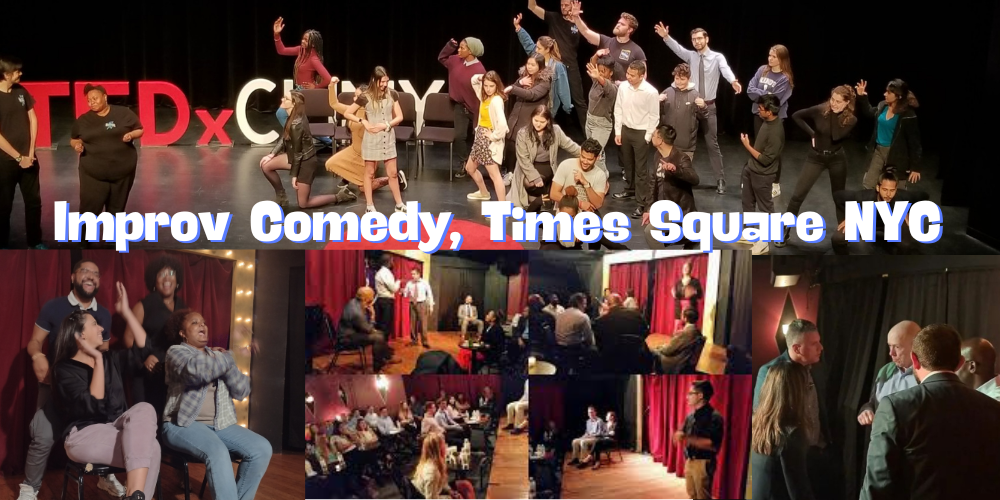
- Our #1 Rule: HAVE FUN but never at another’s expense. Have fun as a team. Leave ego and insecurity at the door. Let go the fear failure and judgement. Fight the urge to think THIS IS HARD. Instead think, I’VE GOT THIS.
- Improv #1 Rule: YES! AND… First accept your scene partner’s choices. AND back up that support with words and actions. Beyond choices in a scene, another way to think of YES AND… is, it’s your job to make your scene partner look amazing.
- #1 Skill in Comedy: LISTENING! Listening with your eyes. Listening with the willingness to change.
- Make BIG SIMPLE Choice. Never worry about being funny, clever or impressive. Never worry about words. Make one simple choice at a time about who you are, where you are and what you are doing. Another term for this is LABELING.
- WHO CHOICES: The most important elements in an improv scene is your relationship to the story and other characters. Name that relationship, always start with that to give each other a context. Label physical, mental and emotional traits about yourself and the other characters. How old are you? What’s your job? What are you wearing/carrying? How do you feel? Why are you here?
- WHERE CHOICES: In the opening moments of a scene, label your location. WHERE ARE YOU? Then discover this location. How dark/light is it? Hot/Cold? Crowded/Sparse? Dry/Humid/Wet? Where chdices will inspire WHO choices as you react and live to the environment created.
- WHAT CHOICES? What are you doing? Make stuff happen. SHOW DON’T TELL! Do stuff. Establish a conflict or obstacle to overcome. How do over comedy this obstcle.
- OBJECT WORK / PANTOMIME: Actions speak louder than words. SHOW DON’T TELL! We don’t have props, costumes or sets, so physically touching our imaginary world with realistic movement makes our blank canvass of the stage come alive for our characters and our audience. When you pick up and object, imagine it for real, see it, feel it’s weight, shape and texture for real. Also, embody every WHO, WHERE, WHAT choice. Breathe in the emotions and physical pains/joys. Physically react to choices.
- STYLE: What is the tone of the scene? Lack of style, is a style choice, you are performing a naturalistic modern scene that could occur in the real world. Other choices might be western, horror, sci-fi, period work (moments in history), melodramatic, farce, musical etc.
- STORY TELLING – Beginning, Middle End: In general, Improv scenes start in the middle. We begun Estaishing a base reality with the choices made above. But our story, while new to us and the audience, did not start just now. These characters have histories, past conflicts, loves, losses etc. Get past the EXPOSITION and RISING ACTION of a scene quickly with our big bold WHO WHERE WHAT CHOICES and YES AND… moves. Then play the scene. Bring the story to life. Then seek ways to solve the problem. Find compromises. In many comedy scenes we never quite resolve. Our DENOUMENT is cut short. The abrupt end of scenes leaves the audience on the edge of their seats. But we move towards resolution as we try to solve our conflicts and obstacles.

- GET TICKETS to Times Square Shows
- ADULT CLASSES Times Square NYC
- TEEN Classes Times Square NYC
- KID Classes Times Square NYC
- EMAIL for group sales and private events. We daily hosts corporate teams and student groups for shows and workshops. Our touring company tours schools, theaters and event DC To BOSTON and beyond.


You must be logged in to post a comment.